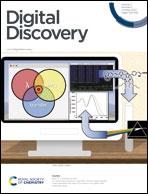Integrating autonomy into automated research platforms
Abstract
Integrating automation and autonomy into self-driving laboratories promises more efficient and reproducible experimentation while freeing scientists to focus on intellectual challenges. In the rapid advances being made towards self-driving laboratories, automation and autonomy techniques are often convoluted due to similarities between them and ambiguous language, leaving the trade-offs between them overlooked. In this perspective, we address differences between making a process occur without human intervention (automation) and providing agency and flexibility in action (autonomy). We describe the challenges of autonomy in terms of (1) orchestration, how tasks are organized and coordinated; (2) facilitation, how devices are connected and brought under automated control; and (3) scripting languages, how workflows are encoded into digital representations. Autonomous systems require advanced control architectures to handle a reactive, evolving workflow, involving control abstractions and scheduling beyond what current automation approaches provide. The specification of an autonomous system requires goal-oriented commands and context awareness, whereas automation needs exact, unambiguous instructions for reproducibility and efficiency. We contend that this contrast in design creates a need for improved standards in automation and a set of guiding principles to facilitate the development of autonomy-enabling technologies.



 Please wait while we load your content...
Please wait while we load your content...